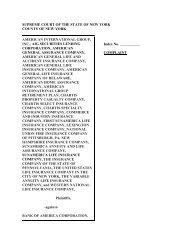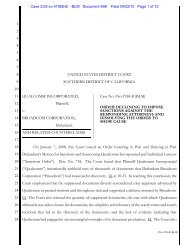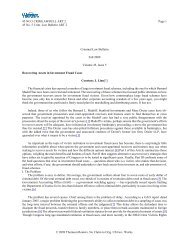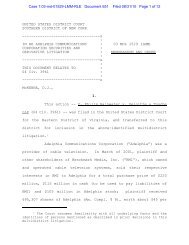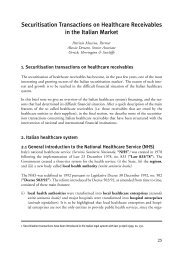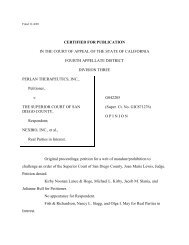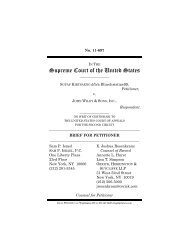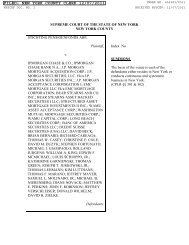Public Charter Schools Borrowing With Tax-Exempt Bonds, Second ...
Public Charter Schools Borrowing With Tax-Exempt Bonds, Second ...
Public Charter Schools Borrowing With Tax-Exempt Bonds, Second ...
You also want an ePaper? Increase the reach of your titles
YUMPU automatically turns print PDFs into web optimized ePapers that Google loves.
B. Other Guarantors and Credit Enhancement Vehicles. As the public charter<br />
school movement enters its third decade, and while access to facilities financing<br />
remains a challenge, the need for non-traditional forms of credit enhancement<br />
has gained prominence. Limited credit enhancement programs for public charter<br />
school tax-exempt bonds have been developed by federal 27 and state 28 agencies and<br />
private institutions, 29 which may serve as models for future program development.<br />
Several reform-oriented charitable foundations have invested substantially in<br />
the public charter school movement, impacting charter facilities policy development<br />
broadly as well as supporting high performing individual schools. Such foundations<br />
could leverage their financial resources in a variety of ways to enable public charter<br />
schools to access tax-exempt financing (that might not otherwise be eligible) and<br />
lower the school’s borrowing cost. Examples include: (a) guaranteeing a school’s<br />
timely debt service payments (akin to a bond insurer), (b) purchasing a subordinate<br />
portion of a project’s tax-exempt debt (thereby deleveraging the school’s balance<br />
sheet from the tax-exempt bond investor’s perspective), and (c) pledging a pool of<br />
funds to perform either of these functions for a regional or state-wide portfolio of<br />
facilities projects.<br />
One example of this type of innovation has been deployed in a small number<br />
of tax-exempt financings, where a large charitable foundation extended a guarantee<br />
to bondholders in the form of a program related investment (or “PRI”) loan. 30 In<br />
line with example (a) above, the public charter school’s payment obligations were<br />
supported by the contractual obligation of the foundation to issue a payment to<br />
bondholders in the event of a shortfall in funding of the school. The payment by<br />
the foundation is derived from a PRI loan, which is eventually repayable to the<br />
foundation, so that the foundation may continue to redeploy its capital for its<br />
charitable purposes. The alignment of PRI loan guarantees with the full principal<br />
amount and term of a tax-exempt bond financing represents the greatest benefit to<br />
bondholders, and the greatest likelihood of lowering the overall borrowing cost for<br />
the school.<br />
<strong>Public</strong> <strong>Charter</strong> <strong>Schools</strong> <strong>Borrowing</strong> <strong>With</strong> <strong>Tax</strong>-<strong>Exempt</strong> <strong>Bonds</strong>, <strong>Second</strong> Edition 37



